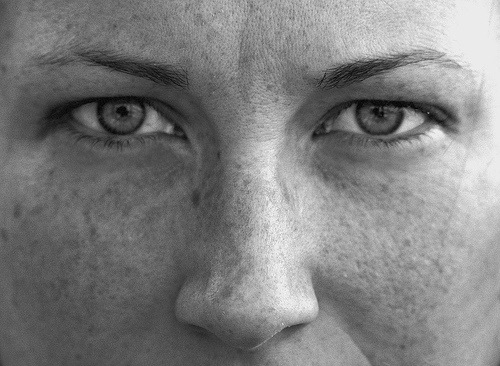 Evolution
Evolution
 Intelligent Design
Intelligent Design
How Do You Make a Face? With Junk DNA

Kids are getting ready to make scary faces for Halloween — or pretty ones, for those inclined to princess costumes. Scary or pretty, there’s something special about a human face. Each is truly unique, and retains its identity despite decades of aging; we can easily pick out a friend or family member in a sea of faces at a public stadium, or in a group photograph from years ago. A news item from Lawrence Berkeley National Lab begins:
The human face is as unique as a fingerprint, no one else looks exactly like you. But what is it that makes facial morphology so distinct? Certainly genetics play a major role as evident in the similarities between parents and their children, but what is it in our DNA that fine-tunes the genetics so that siblings — especially identical twins — resemble one another but look different from unrelated individuals? A new study by researchers at the U.S. Department of Energy’s Lawrence Berkeley National Laboratory (Berkeley Lab) has now shown that gene enhancers — regulatory sequences of DNA that act to turn-on or amplify the expression of a specific gene — are major players in craniofacial development. (Emphasis added.)
The paper, published in Science, says a lot just with its title: "Fine Tuning of Craniofacial Morphology by Distant-Acting Enhancers." Snippets of genetic code hundreds of kilobases away from a gene can tweak this or that muscle or fold of skin. Working together, they act like a sculptor, New Scientist writes. But what did scientists used to call these genetic sculptors? The headline reads, "Your face may have been sculpted by junk DNA." That’s right:
Even the prettiest faces are built using junk. In mice, the shapes of the face and skull are finely tuned by junk DNA, so called because it was initially thought to lack function since it doesn’t encode proteins. The same junk DNA sequences are found in humans, so they are probably also shaping our faces.
Researchers began realizing something more was at work when they could only find a few genes involved in craniofacial sculpting. Remarkably, that "something more" was non-coding DNA — often far removed from the genes being modified. New Scientist continues:
According to Axel Visel of the Lawrence Berkeley National Laboratory in California and his colleagues, more variation is controlled by distant-acting enhancers. These are short sequences of DNA, in non-coding regions of the genome, that can influence the activity of the facial genes, even if they are a long way along the DNA strand.
The researchers identified four thousand candidate enhancers involved in facial development. Of those, over two hundred enhancers were studied at work in developing mouse embryos, surprising the team with the "remarkable spatial complexity of in vivo expression patterns." At eight weeks, subtle changes were seen in the developing mouse faces when enhancers were switched on and off. New Scientist says, "For instance, deleting one enhancer left mice with faces that were longer — but skulls that were broader and shorter — than the control mice." Visel also found that several enhancers could enhance the same gene, showing that they can act cumulatively as well as independently.
This function-guided research promises additional benefits. For example, it can help geneticists identify the causes of facial defects, like cleft palate. New Scientist explains, "So perhaps rather than looking for mutations in the genes, we should be focusing on mutations in the enhancers that influence those genes." That’s more trouble for Darwinism. If mutations in the "fine-tuning" apparatus can cause defects, there’s a lot more material that looks designed.
The authors view their findings as a new direction for research:
Because many craniofacial enhancers are located in genome regions associated with craniofacial birth defects, such as clefts of the lip and palate, our results also offer a starting point for exploring the contribution of noncoding sequences to these disorders.
To us, almost all mouse faces look alike. There could be many more enhancers involved in the development of our characteristically unique faces. The lesson is clear:
"Enhancers are part of the 98 per cent of the human genome that is non-coding DNA — long thought of as ‘junk DNA’," says Visel. "It’s increasingly clear that important functions are embedded in this ‘junk’."
What’s important is a pattern emerging over the last decade in scientific research: what some evolutionary biologists used to dismiss as junk actually is highly important — as important as that reflection you see in the mirror. Why are intelligent design advocates not surprised? The old advocates of "junk DNA" need to "face up" to a mistaken assumption. This new finding is a wink and a smile looking back at them.
Photo credit: Andrew Morrell Photography/Flickr.
